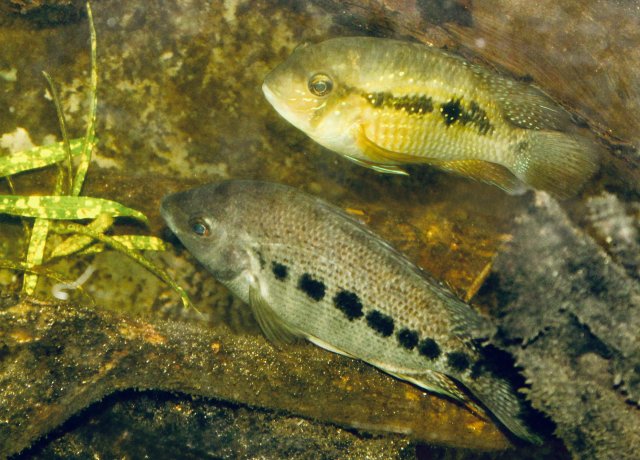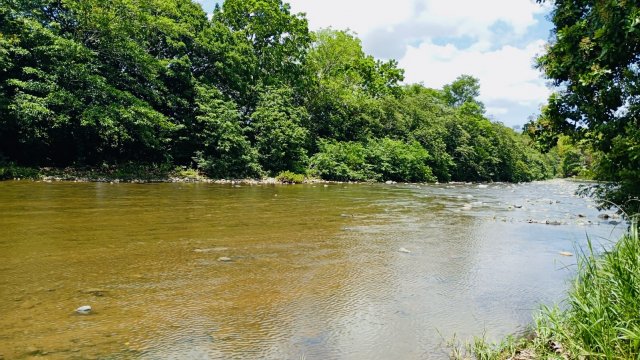Agree with neutrino, with cichlids (in most cases) its not about whether or not they will eat each other...but
it's about how much territory an individual or pair needs to fit into there comfort zone.
In a tank, or pond of only a couple or few hundred gallons, 1 pair of adult cichlids may totally max that amount of territorial space out.
In a tank or pond of 500 to 800 gallons, it may be possible to keep 2 pairs of cichlids.
Even in a territory the equivalnt of @ 10,000 gallons, the cichlids in this cenote have quite torn up fins from territorial battles.
027 zps4b102ffd
In nature in rivers west of the Andes where Andinoacara species are found, there is only 1 one other genus of cichlids species present (Mesoheros festae), and their territories seldom impinge or even come close.
They do share habitat with large shoals, and a number of Characin species, but seldom other cichlids.
I find this is a common occurance with many riverine species.
Mayaheros beanii on the Pacific coast of Mexico, is the only cichlid in its habitat, but plenty of Characins.
Another cichlid on the central Pacific coast of Mexico, is Amphilophus istlanus.
With Nandopsis it is the only cichlids found on Hispaniola, or Cuba, Nanopsis tetracanthus, and a tiny separate area where Nandopsis Ramsdeni is isolated.
Where I collect cichlids in "some" Central Panamanian rivers, such as the Pacora , so far, I have only found 2 species coexisting in an area of hundreds of yards, and millions of gallons
Andinoacara coeruleo punctatus and Isthmoheros tuyrense.


Of course in lacustrine environments there are often more species, (especially in African lakes), but here billions of gallons are involved.




